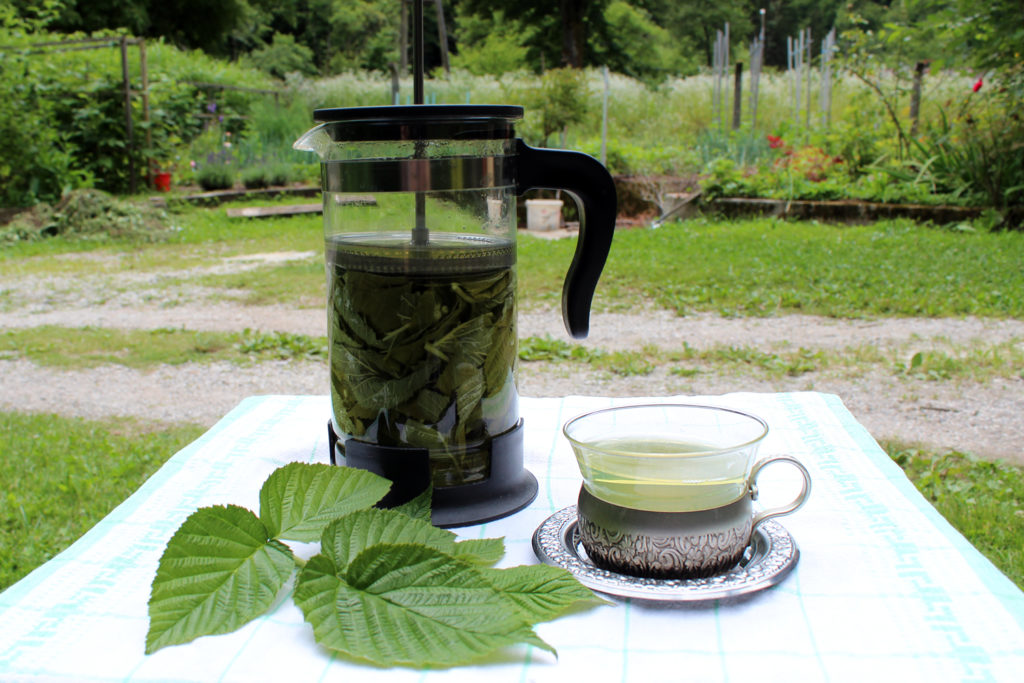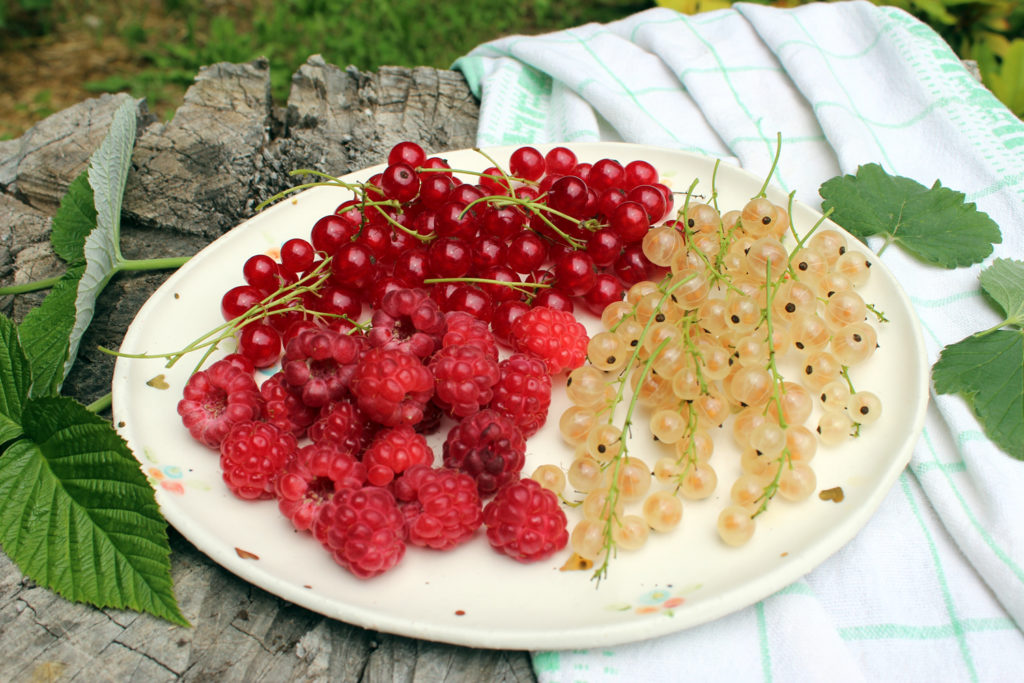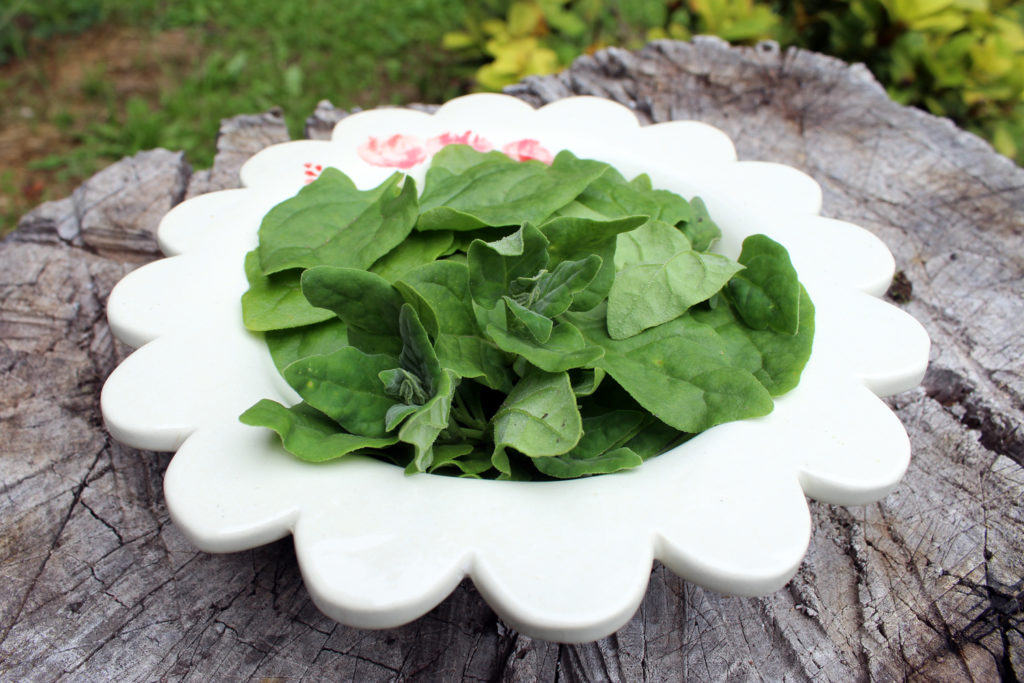It’s been little over a month since we greeted a new family member in the House by the woods. I plan to share my birth story in one of my next posts. This time I will focus on the three garden produce that has helped me through my pregnancy, preparation for the birth and continue to ease my post-natal period. It is recommended to eat as many fresh vegetables as possible during pregnancy. If it’s home-grown it’s even better. 🙂
When I found out that I was pregnant, my first instinct was to Google “What not to eat during pregnancy”. Despite the flood of various opinions and recommendations I ended up eating everything except dairy products made from unpasteurized milk and raw meat. Since my baby was due in June, I was able to include a lot of homegrown veggies and other garden produce in my diet during the third trimester. In the next few paragraphs, I’m writing about the three kinds of garden produce for which I am particularly grateful that they were in my garden during pregnancy.

Red raspberry leaf tea
Red raspberry leaf tea (fresh or dried) is believe to help to soften the cervix in late pregnancy and at the same time strengthen the uterine muscles to facilitate and speed up the labor. Drinking of red raspberry leaf tea after childbirth is also believed to relieve the uterine contraction and stimulate the formation of milk and act antibacterial and anti-inflammatory. It’s not common to drink the tea in Slovenia but I have found some strong arguments for its use abroad, especially by midwives in America and the United Kingdom. Red raspberry leaves contain useful substances such as natural antioxidants, including ellagic acid, flavonoids and tannins. When I investigated a little further I found that it didn’t have negative side effects, so it seemed harmless if not beneficial for me to drink it. I drank about half a liter every day, starting in the 36th week of my pregnancy.
If you will also decide to prepare yourself some red raspberry leaf tea (which incidentally also helps relieve period pain – I wish someone told me this sooner), don’t expect it to taste like raspberries. Tea from raspberry leaves has a more of a strong green tea flavor, which is due to tannins. Some people like to serve it like green tea – either with honey or a splash of milk. 🙂

How I made my red raspberry leaf tea?
Since the timing was perfect, I brewed my tea from fresh leaves. I picked a handful of young raspberry leaves, chopped them and soaked them in half a liter of boiling water. I let it sit for 20 minutes. After that time I strained the blend. I drank it during the day, warm or cold. If you decide to prepare your tea from dry raspberry leaves, reduce the number of leaves to approximately one third.
It is worth noting that prior to the consumption of red raspberry leaf tea during pregnancy it’s wise to consult with your personal gynecologist. Drinking red raspberry leaf tea is recommended especially in late pregnancy. Health experts advise against its consumption during the first trimester.
Did it help me? In short, I do not know. It certainly did not hurt me, I always felt good after drinking it. My son was born when I was pregnant for 38 weeks and 3 days, the birth lasted for 3 hours and a half, which, according to the midwife, was very fast for the first delivery. 🙂
Why homegrown? With the use of homegrown raspberry leaves we avoid the pesticides commonly used in commercial raspberry cultivation. We can also brew tea from fresh raspberry leaves while we can only buy dried red raspberry leaves.
Homegrown berries
I was diagnosed with a mild form of gestational diabetes in my late pregnancy. As a form of treatment, I was prescribed a strict diet which banned most fruits from my daily life because the high glycemic index of most fruit can cause blood sugar to rise. I enjoy a lot of fresh fruit – I grew up with the saying “One apple a day keeps the doctor away”, which is probably true if the doctor is not a diabetologist. 😉 However, my fruit cravings were satisfied by the berries, more precisely homegrown strawberries. It is recommended to enjoy all kinds of berries during pregnancy because they are also suitable for pregnant women with gestational diabetes due to their low glycemic index. Not to mention that they contain a lot of vitamins and antioxidants – more about this in the next post that will talk about currants. 🙂

How I ate my berries?
I ate most of my homegrown strawberries for breakfast, together with some yogurt and oatmeal. Homegrown strawberries were followed by homegrown raspberries which were followed by currants (also homegrown). Soon we’ll be able to enjoy blueberries, followed by another batch of raspberries in autumn. Growing berries really will set you up for the whole season. 🙂
Did it help me? I was told that due to gestational diabetes my baby might be on the heavier side. He was born weighing 3090g was born so I think that the diet with included berries was successful. Also, all the blood sugar measurements that were performed during the pregnancy were within the normal limits.
Why homegrown? With domestic strawberries we avoid pesticides and genetically modified commercially produced strawberries – it is known that strawberries are one of the most genetically modified and pesticide-loaded fresh foods.
Homegrown spinach and other green vegetables
Homegrown spinach is a good source of folic acid during pregnancy. Folic acid prevents some defects in the development of the fetus. Spinach is also an important source of iron and helps to prevent anemia. Research also suggests that spinach facilitates the development of infant’s lungs as it contains beta carotene, which is converted into vitamin A. Vitamin A helps with the development of baby’s lungs, gaining of baby’s weight and does wonders on the digestion of a pregnant woman. 🙂

How I ate my spinach?
Because I gave up on growing regular spinach a while back, I only grow New Zealand spinach, which is much more durable and undemanding than the regular variety. So during my pregnancy I enjoyed the New Zealand spinach from my garden. Most often I went to the garden, picked a few leaves of the New Zealand (crawling) spinach, sauteed them, added a few drops of lemon juice and ate them as apart of my dinner. I also enjoyed it raw in salads, always in combination with lemon juice, because iron is much better absorbed when accompanied by vitamin C, which is present in lemon juice.
Did it help me? My blood tests were very good throughout my pregnancy. I never needed any iron supplements.
Why homegrown? Because nothing beats the feeling when you go to a cool garden in the evening and get some fresh spinach for dinner. It takes way less than one hour from harvest to ingestion, and most of the nutrients in fresh spinach are preserved.

No Comments